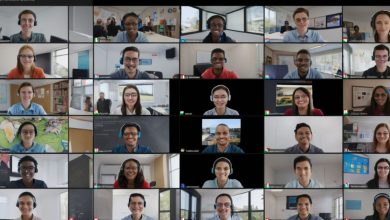How Cultural Exchange Programs Build Global Skills
Cultural exchange programs build global skills by immersing participants in new environments where they adapt to unfamiliar customs, navigate language barriers, and collaborate with people from diverse backgrounds. In this article, you will learn how these programs foster cross-cultural communication, enhance adaptability, and cultivate leadership qualities that set you apart in today’s interconnected world. By the end, you’ll understand which program aligns with your goals, how to apply successfully, and how to showcase the skills you gain.
Understanding Cultural Exchange Programs
Definition and Types of Programs
Cultural exchange programs are organized opportunities that allow individuals to live, work, or study in another country for a specified period. They can be short-term (four to twelve weeks) or long-term (a semester or full academic year). Common types include:
-
Student Exchange: Enroll at a host institution to take courses alongside local students.
-
Work-Study Abroad: Combine academic coursework with part-time work placements.
-
Professional Fellowships: Focus on internships or research projects within companies, nonprofits, or government agencies.
-
Homestay Programs: Live with a host family to maximize language immersion and cultural insight.
Who Participates and Why?
Participants range from high school and university students to early-career professionals and educators. The motivations for joining typically include:
-
Immersion in a new language and culture
-
Networking with international peers
-
Enhancing a resume with global experience
-
Developing independence and adaptability
Students often seek credit toward their degrees, while professionals aim to expand their careers by gaining international work experience. Educators may pursue exchange opportunities to bring new teaching techniques back to their home institutions.
Core Global Skills Developed
Cross-Cultural Communication
When you live in a foreign environment, your ability to understand and adapt to cultural norms becomes essential. Cross-cultural communication involves:
-
Active Listening in a Multilingual Environment: Paying close attention to tone, pacing, and nonverbal cues.
-
Nonverbal Cues and Cultural Context Awareness: Learning which gestures are respectful or offensive in the host culture, so you can avoid misunderstandings.
Participants discover that conveying ideas effectively goes beyond vocabulary—understanding local social conventions often makes the difference between a successful conversation and an unintended offense.
Adaptability and Resilience
Adjusting to a new country demands both flexibility and mental toughness. Here is a three-step strategy to help you adjust quickly to a new culture:
-
Research Cultural Norms in Advance
-
Before departure, study common customs, greetings, and etiquette—knowing basic do’s and don’ts helps you avoid costly missteps.
-
-
Practice Flexible Daily Routines
-
If the local cuisine, transportation, or daily schedule differs greatly, be open to new meal times, sleeping schedules, or modes of travel.
-
-
Seek Feedback from Host Families or Mentors
-
Invite constructive criticism about your behavior or communication style. Mentors can point out subtle cultural nuances you might miss.
-
Overcoming minor frustrations—like navigating unfamiliar public transit or deciphering local slang—builds resilience and reinforces your confidence when tackling future challenges.
Problem-Solving in Diverse Environments
Encountering unfamiliar systems and language barriers forces creative problem-solving. Consider this comparison:
-
At Home: You know how local banking, transportation, and customer service operate, so you generally resolve issues quickly.
-
Abroad: You may encounter unexpected bureaucracy—such as registering for a national ID, navigating healthcare in a foreign language, or negotiating apartment leases—requiring you to adapt your approach.
Confronting these obstacles abroad trains you to:
-
Research local resources (online forums, embassy guides, peer recommendations)
-
Approach authorities with patience and respect even when communication is challenging
-
Build contingency plans when systems don’t work as expected
Over time, you learn to remain calm under pressure, identify creative solutions, and seek alternative pathways when initial plans fail.
Leadership and Teamwork on a Global Scale
Leading teams of mixed backgrounds or coordinating group projects in a different cultural context sharpens leadership skills. Here are five ways cultural exchange participants demonstrate leadership:
-
Facilitating Intercultural Group Projects: Organizing team meetings, translating between languages, and ensuring everyone’s voice is heard.
-
Leading Peer-to-Peer Language Practice Sessions: Hosting informal conversation clubs or study groups to help fellow participants improve language proficiency.
-
Initiating Community Volunteer Projects: Partnering with local nonprofits to plan and execute events, demonstrating initiative and cross-cultural collaboration.
-
Mediating Misunderstandings Between Diverse Groups: Acting as a cultural liaison when stereotypes or miscommunications arise, using empathy to bridge differences.
-
Organizing Cultural Events on Campus or in the Workplace: Coordinating exhibitions, performances, or discussion panels that highlight shared values and foster mutual understanding.
By guiding teams through cultural differences, you learn to balance assertiveness with humility—a leadership style increasingly valued by global employers.
Selecting the Right Program for Skill Building
Aligning Program Goals with Desired Skills
Not all cultural exchange programs deliver the same experiences. Use this checklist to match your objectives to program features:
-
Want Strong Language Fluency? Look for programs with homestay arrangements or language immersion requirements.
-
Seeking Professional Development? Choose exchange fellowships that guarantee internships or mentorship under industry experts.
-
Needing Academic Credit? Verify that your home institution will accept transfer credits from the host university.
-
Desiring Community Engagement? Prioritize programs that include volunteer opportunities or service-learning modules.
By clarifying your goals, you can narrow down options that maximize the skills you want to develop, whether it’s public speaking in a second language or managing a cross-border project.
Program Accreditation and Support Services
Program quality often hinges on the credibility of the organizing body and the level of on-the-ground support:
-
Importance of Local Host Support
-
Mentors, academic advisors, or intercultural coaches can provide guidance on cultural norms, academic expectations, or workplace protocols.
-
-
Verifying Program Credentials
-
Look for accreditation by recognized bodies, check alumni testimonials, and confirm that the program adheres to safety and insurance requirements.
-
Questions to Ask Before You Enroll
-
Does this program offer job placement assistance or internships?
-
Are there structured cultural orientation sessions before departure?
-
What is the alumni success rate for career advancement after completing this program?
-
How comprehensive is the health and accident insurance coverage?
Having clear answers helps you avoid unexpected costs and ensures you receive adequate mentoring and resources throughout your exchange.
Step-by-Step Guide to Applying
Research Phase
Begin by exploring reputable online resources that compare exchange programs:
-
Official Ministry or Embassy Websites: Government portals often list approved programs and visa requirements.
-
Accredited Exchange Platforms: Platforms like AIESEC or Council on International Educational Exchange (CIEE) provide detailed program information and alumni reviews.
-
University International Offices: Many universities maintain partnerships; their websites can contain application deadlines, credit transfer guidelines, and scholarship links.
By cross-referencing multiple sources, you build a shortlist of programs that match your academic, professional, and personal objectives.
Application Materials and Deadlines
To present a competitive application, prepare these common requirements:
-
Curriculum Vitae or Resume: Highlight any previous intercultural experiences, language proficiency, and leadership roles.
-
Statement of Purpose: Clearly articulate how cultural exchange programs build global skills you intend to leverage—mention specific goals like improving business communication or research capabilities.
-
Letters of Recommendation: Obtain endorsements from professors or supervisors who can attest to your adaptability, teamwork, and academic achievements.
-
Language Proficiency Proof: Provide TOEFL, IELTS, DELE, or other certifications to demonstrate your ability to function in the host country’s language.
-
Transcripts and Academic Records: Ensure they are translated, notarized, and submitted before deadlines, which often fall six to nine months before program start dates.
Missing documents or late submissions can disqualify your application, so create a timeline that allocates enough buffer time for translations and notarizations.
Interview Preparation
If the program requires an interview, focus on showcasing your adaptability and cross-cultural awareness. Consider these tips:
-
Demonstrating Cultural Adaptability
-
Prepare anecdotes that highlight how you successfully engaged with diverse teams or overcame language barriers in past experiences.
-
-
Emphasizing Problem-Solving Skills
-
Use the STAR method (Situation, Task, Action, Result) to explain how you navigated unfamiliar environments or resolved conflicts.
-
Mock Q&A
-
“Tell us about a time you resolved a cross-cultural misunderstanding.”
-
Describe the context (Situation), explain your role (Task), detail how you acted (Action), and share the positive outcome (Result).
-
-
“How will you contribute to our host community?”
-
Highlight specific ideas like organizing language cafés or volunteering at local schools.
-
Funding and Scholarship Opportunities
Securing financial aid often determines whether you can participate. Compare merit-based and need-based scholarships:
| Feature | Merit-Based Scholarships | Need-Based Scholarships |
|---|---|---|
| Eligibility Criteria | Academic excellence, leadership records | Financial need, low household income |
| Application Requirements | High GPA, standardized test scores | Detailed financial statements, essays on need |
| Award Amount | Up to full tuition or stipend | Varies based on demonstrated need |
| Renewal Conditions | Maintaining a minimum GPA | Continued proof of financial need |
Many universities and private organizations offer grants specifically for exchange participants. Apply early to maximize your chances, as funding cycles often close months before program start dates.
Measuring and Showcasing Your Global Skills
Tracking Skill Development During the Program
Set SMART goals—Specific, Measurable, Achievable, Relevant, Time-bound—to monitor your progress. For example:
-
Specific: Improve conversational proficiency in Spanish to intermediate level.
-
Measurable: Hold 10-minute conversations with native speakers without relying on a dictionary.
-
Achievable: Enroll in local language workshops and practice with host family members.
-
Relevant: Aspiring to a career in international marketing where Spanish fluency is essential.
-
Time-bound: Achieve these goals within a three-month home-stay period.
Documenting milestones—like completing a language workshop or co-leading a community project—makes it easier to measure how fast you’re building adaptability, collaboration, and communication skills.
Post-Program Reflection and Skill Validation
Upon returning home, validate your new competencies through multiple channels:
-
Obtain Certificates or Transcripts from the Host Institution
-
Official documentation of completed courses or internships demonstrates academic and professional achievements to future employers.
-
-
Collect Testimonials from Host Supervisors or Peers
-
Written endorsements highlighting how you excelled in team projects or community activities add credibility to your resume.
-
-
Document Projects or Presentations Completed Abroad
-
Build a portfolio showcasing research, presentations, or volunteer initiatives to illustrate your leadership and problem-solving abilities.
-
-
Maintain a Self-Assessment Journal
-
Compare your skill level before departure and after return—note improvements in language, confidence, and intercultural adaptability.
-
These tangible proofs make it easier to articulate the value of your experience when interviewing or applying for further academic or professional opportunities.
Leveraging Global Skills on Your Resume and LinkedIn
When updating your professional profiles, emphasize how cultural exchange programs build global skills. Incorporate bullet points such as:
-
“Coordinated a cross-border research project involving four international universities, presenting findings at a global symposium.”
-
“Facilitated weekly language exchange sessions for 15 participants, improving team communication and intercultural understanding.”
-
“Managed a community service initiative in local schools, leading to a 20% increase in student engagement with extracurricular activities.”
How Employers View International Exchange Experience
Employers recognize that candidates who have thrived in foreign environments often:
-
Adapt quickly to new teams and work cultures.
-
Communicate effectively across language barriers.
-
Demonstrate resilience when facing unfamiliar challenges.
By tailoring your resume to highlight these strengths, you position yourself as a candidate equipped with the interpersonal and problem-solving skills necessary for global roles.
Case Studies and Success Stories
Student Perspective: Language Major Turned Global Marketer
A linguistics student from Canada spent a semester in Madrid, Spain. While there, she:
-
Enrolled in a local university’s marketing course taught in Spanish.
-
Collaborated with Spanish classmates on a bilingual marketing campaign for a regional startup.
-
Utilized her linguistic background to bridge communication gaps and secure an internship at a multinational advertising agency upon return.
Within six months of graduation, she received a full-time offer from a global firm, crediting her exchange experience for her fluency, cultural insight, and professional network.
Early Career Professional: From Exchange Participant to Multinational Team Leader
A recent engineering graduate joined a six-week work-study exchange in Germany. During this period, he:
-
Assisted in coordinating a robotics project with colleagues from four countries, navigating time zone differences and technical terminology.
-
Presented project updates in both English and German, earning praise for clarity and cross-cultural collaboration.
-
Returned home with a portfolio of prototypes and a strong recommendation letter from his host supervisor.
As a result, he was hired as a junior engineer at an international firm and promoted to project lead within two years, leveraging the leadership and teamwork skills he developed abroad.
Educator Example: Integrating Cultural Competence in Classroom Curriculum
A high school teacher from Australia participated in a three-month exchange teaching program in Japan. Inspired by local pedagogical approaches, she:
-
Introduced collaborative group discussions modeled after Japanese “circle time,” improving student participation.
-
Integrated cultural art projects—like origami and calligraphy—into her curriculum to foster creativity and global awareness.
-
Established a pen-pal program between her students and their Japanese counterparts, promoting ongoing intercultural dialogue.
These classroom innovations led to a 15% increase in language class enrollment back home and solidified her reputation as a forward-thinking educator.
Cultural Exchange vs. Other Global Experiences
Study Abroad Programs
| Feature | Cultural Exchange Programs | Traditional Study Abroad |
|---|---|---|
| Duration | Short-term (4–12 weeks) or long-term | Semester to full-year |
| Immersion | Homestay-focused; host families | Campus dormitories or apartments |
| Cultural Integration | High (community projects, host family) | Moderate (limited local engagement) |
| Cost | Variable; scholarships common | Generally higher tuition fees |
| Skill Focus | Interpersonal adaptability, language | Academic specialization |
Study abroad often centers on earning credits and academic immersion, whereas cultural exchange prioritizes hands-on cultural experiences, language practice, and community involvement.
International Internships vs. Exchange Fellowships
When deciding between an international internship and an exchange fellowship, consider:
-
Placement Process
-
Internships: Often arranged through university partnerships or industry connections.
-
Fellowships: May require a separate application to a funding body or nonprofit organization.
-
-
Compensation
-
Internships: Sometimes paid, but often unpaid, depending on industry and country.
-
Fellowships: May offer stipends, grants, or scholarships to cover living expenses.
-
-
Mentorship Structure
-
Internships: Supervised primarily by company staff focused on project deliverables.
-
Fellowships: Offer structured mentorship that includes both professional guidance and cultural orientation.
-
Which Path Builds More Immediate Career Skills?
-
International Internships: Provide direct work experience in your field, accelerating technical skill development.
-
Exchange Fellowships: Emphasize cross-cultural adaptability, networking with thought leaders, and often involve research or policy-focused projects that enhance both professional and academic credentials.
Choosing the path depends on your priorities: if your goal is rapid technical skill acquisition, an internship might be best; if you aim for broad leadership experience and cultural competence, a fellowship offers deeper immersion.
Frequently Asked Questions
What global skills can I realistically gain in a 4-week exchange?
Within a month-long program, you can improve basic language fluency, gain first-hand cultural insights, and establish a foundational network of local and international peers. Many participants become comfortable navigating public transit, ordering meals, and holding simple conversations in the host language.
Do cultural exchange programs guarantee job placement?
Most programs do not guarantee direct job placement. However, they often provide career counseling, networking events, and interview workshops to help you leverage your experience when applying for jobs.
Can virtual cultural exchange yield similar skill gains?
Virtual exchanges can improve digital communication and introduce you to collaborative online tools. However, they lack the depth of in-person immersion—practicing nonverbal cues, daily language use, and spontaneous problem-solving in real-world contexts.
How do I address culture shock during my exchange?
Maintain a familiar routine when possible (e.g., exercise, journaling). Seek out other participants or local friends to share experiences. Practice mindfulness and remind yourself that initial discomfort often gives way to deeper understanding and confidence.
Are there risks involved in cultural exchange programs?
Risks include health or safety issues in unfamiliar environments. To mitigate, purchase comprehensive health insurance, register with your embassy, and follow local advisories. Familiarize yourself with emergency contacts and ensure your host organization provides on-going support.
Conclusion
Participating in cultural exchange programs builds global skills—cross-cultural communication, adaptability, problem-solving, and leadership—that are invaluable in today’s interconnected job market. By selecting a program aligned with your objectives, preparing a strong application, and actively documenting your progress, you set yourself up for both personal growth and career advancement. Reflect on your experiences, validate your achievements, and translate them into concrete examples when presenting yourself to employers or academic institutions. Embrace the opportunity to learn from new cultures and return home equipped with the skills to thrive on a global stage.
Published on: 4 de June de 2025








